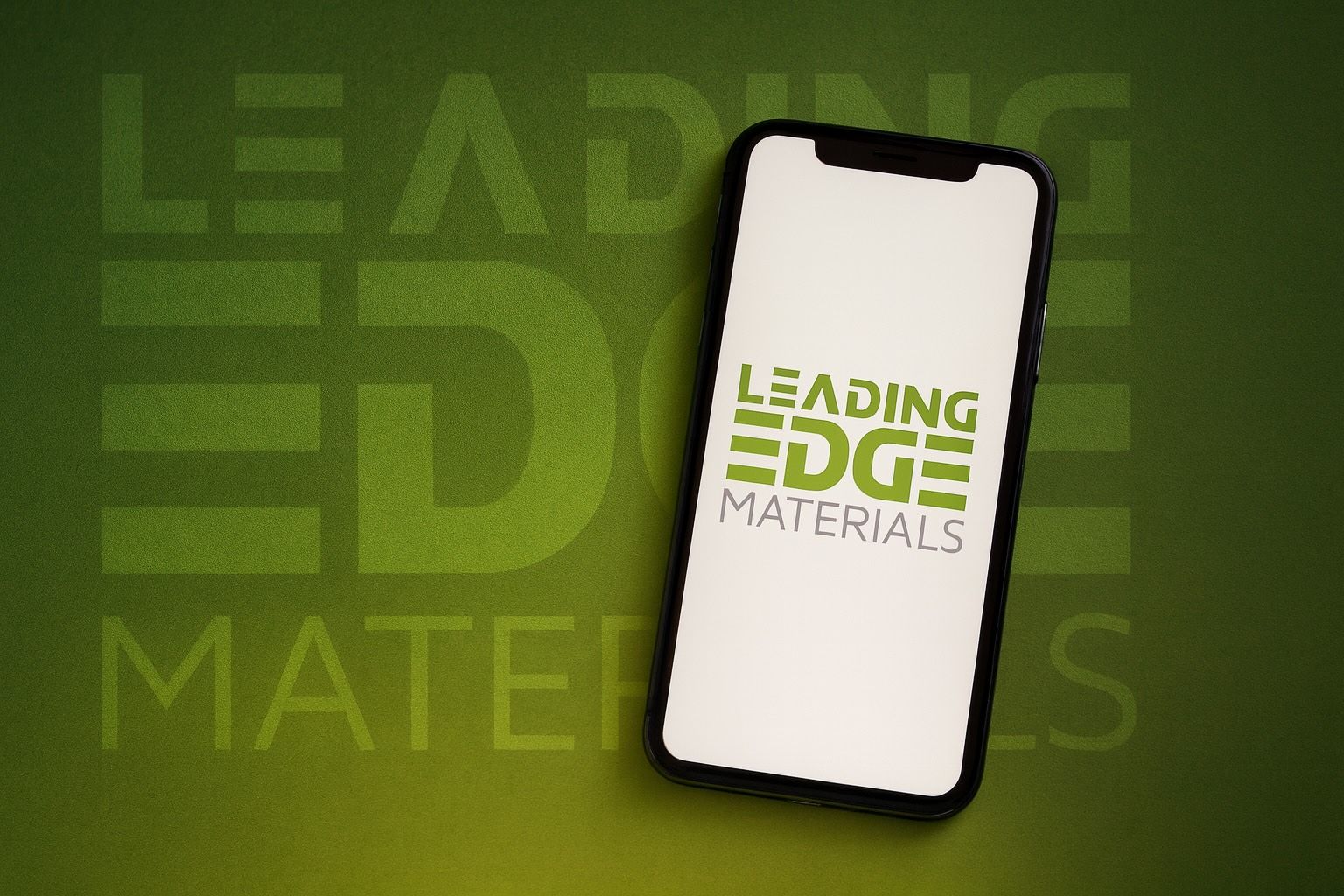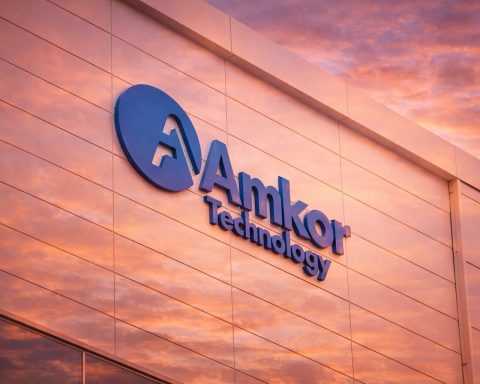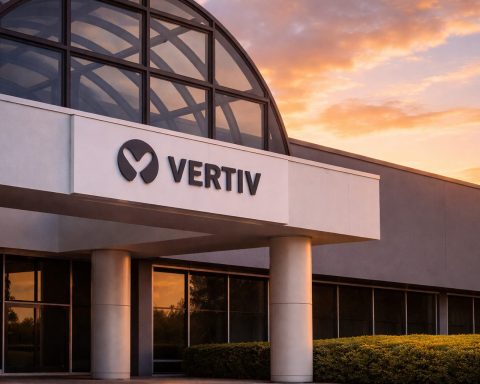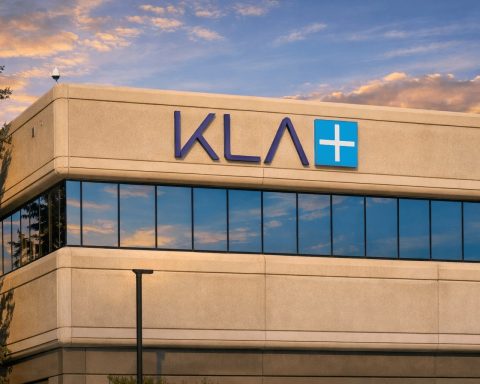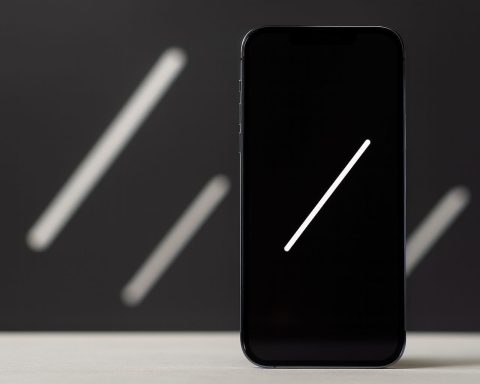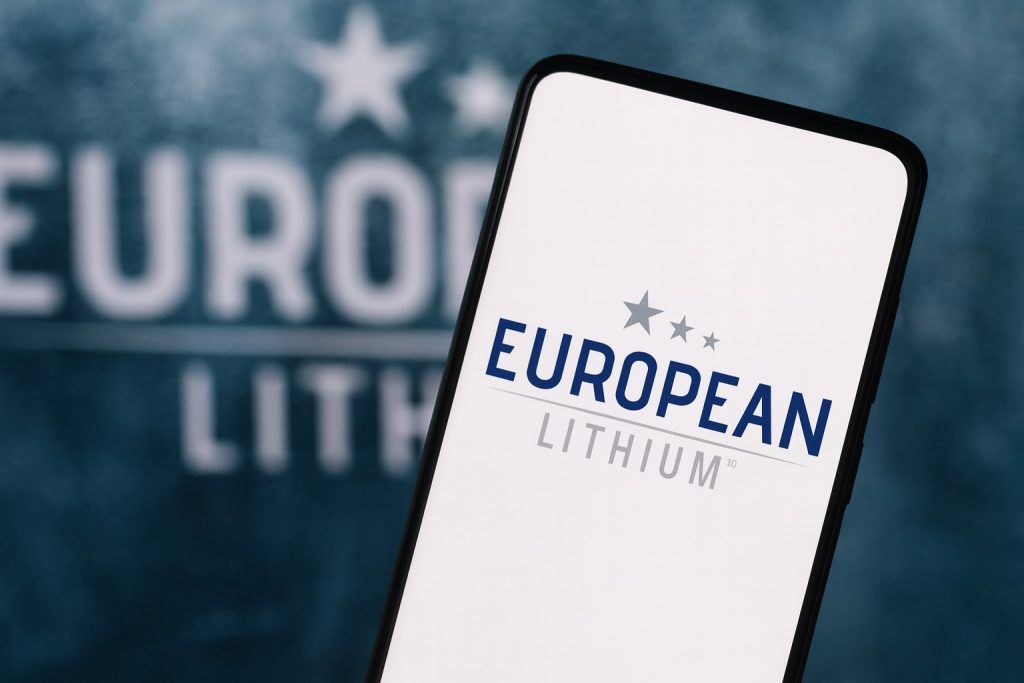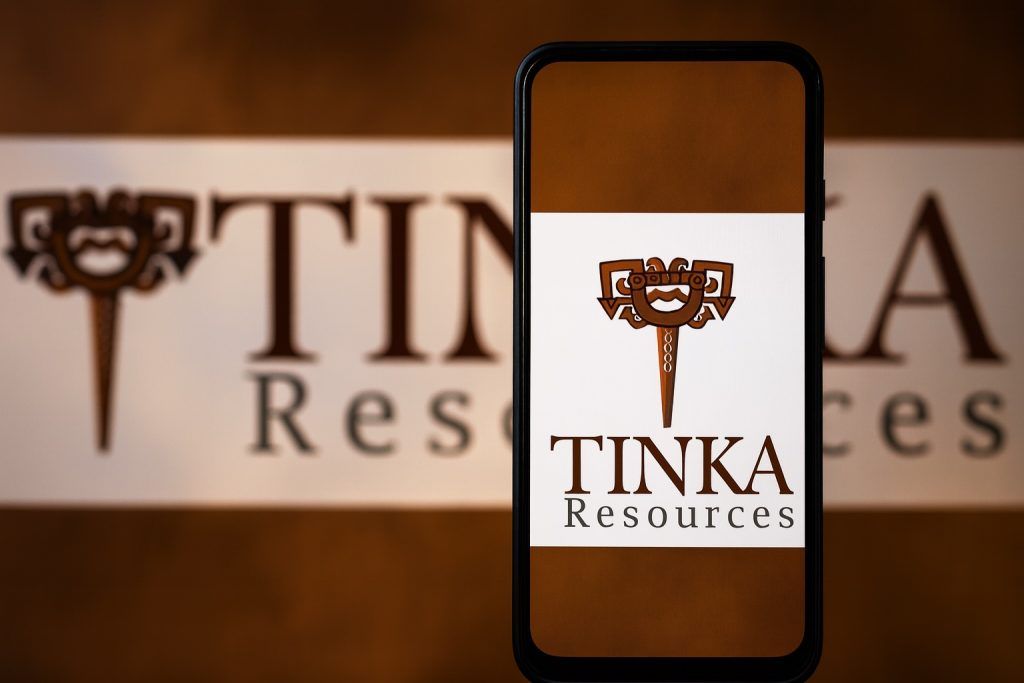- Critical Materials Focus: Leading Edge Materials Corp. (TSXV: LEM; Nasdaq First North: LEMSE; OTCQB: LEMIF) is a Canadian company developing critical raw material projects in the European Union, including a graphite mine in Sweden and a heavy rare earth elements deposit, plus a nickel-cobalt exploration in Romania [1]. These materials (graphite, rare earths, etc.) are vital for EV batteries, electric motors, and energy storage technologies underlying the clean energy transition [2].
- Stock Price Spike: The stock has been highly volatile and trending up. It surged ~27% in a single day on October 6, 2025 (to around C$0.30) amid heightened investor interest [3]. As of Oct 7, 2025, LEM trades near C$0.27 on the TSX-V, up sharply from summer levels and well above its 52-week low of ~C$0.09 (52-week high ~C$0.37) [4] [5]. The market capitalization is roughly C$67 million [6], reflecting the speculative “penny stock” nature of this junior mining firm.
- Latest Developments: In late September 2025, Leading Edge submitted final supplementary data required for a 25-year mining lease (exploitation concession) application on its flagship Norra Kärr rare earth project in Sweden [7]. A decision is expected in Q4 2025 [8]. The company also closed a C$2.84 million private placement financing on August 15, 2025 to bolster its cash reserves [9], as it ramps up efforts on project development.
- Financial Health: The company remains pre-revenue and in development stage. It reported a net loss of ~C$0.61 million for the quarter ending July 31, 2025, an improvement from the prior quarter’s C$1.18M loss (mainly due to lower non-cash stock compensation expenses) [10]. Working capital was just C$0.68M as of July, before the recent financing [11]. Management indicates current cash is enough for basic corporate needs for ~12 months, but additional capital will be required to restart the graphite mine, advance Norra Kärr’s development, or fund Romanian exploration [12].
- Strategic Assets in Europe: Leading Edge’s key assets are 100% owned Woxna Graphite in Sweden – one of the only built and permitted graphite mines in the Western world [13] – and the 100% owned Norra Kärr heavy rare earth element (HREE) deposit in Sweden, which is among Europe’s richest HREE resources (notably containing dysprosium and terbium) [14]. It also holds 51% of the Bihor Sud nickel-cobalt exploration project in Romania, where initial drilling has revealed exceptionally high grades (up to ~6.7% Co and 13% Ni in samples) [15]. These projects align with Europe’s push to secure local supplies of EV battery metals and magnet materials.
- EU Critical Minerals Tailwind: Europe’s drive for “open strategic autonomy” in critical minerals is a major tailwind for the company. The EU’s Critical Raw Materials Act, enacted in 2024, set targets to mine 10% of its annual needs, process 40%, and recycle 25% domestically by 2030 [16]. Critical materials like graphite and rare earths are dominated by China – e.g. China produces ~69% of natural graphite and virtually 100% of refined natural graphite anode material for batteries [17], and Chinese refineries handle 100% of Europe’s magnet rare earths [18] [19]. Recent Chinese export curbs (in 2023–2025) on graphite and rare earths have caused price spikes (dysprosium, terbium prices jumped after China’s restrictions in April 2025) [20], underscoring the urgency for EU sources. Leading Edge’s projects are positioned to potentially fill part of this gap [21] [22].
- High-Risk, High-Reward Outlook: Analysts and experts consider Leading Edge Materials a speculative, high-risk/high-upside play on Europe’s clean energy supply chain. AInvest, for example, calls LEM a “high-beta” play on the EU’s critical raw materials agenda – its assets are “too strategically important to ignore” but success hinges on navigating permitting and funding hurdles [23]. There is no broad analyst coverage due to its size, but recent momentum has turned technical signals bullish (short-term indicators rate it a “Strong Buy” after the breakout) [24]. Ultimately, the 2025–2026 milestones – securing the Norra Kärr mining lease, accessing EU grants/partners to finance Woxna’s restart, and advancing Bihor – will determine whether Leading Edge can capitalize on the critical minerals boom or remains a story of potential.
Latest News & Recent Developments (Early October 2025)
In the first week of October 2025, Leading Edge Materials drew significant attention after a sudden share price spike. On October 6, the stock jumped 27.7% in a single trading session (from C$0.235 to C$0.300) [25]. This leap continued a short-term rally that saw the stock gain over 40% in two weeks [26]. Such volatility suggests speculative buying, likely driven by positive sentiment around the company’s recent news and the broader critical minerals narrative. Investors may be anticipating upcoming catalysts, notably the decision on the Norra Kärr mining lease expected by the end of 2025 [27], as well as Europe’s intensified efforts to shore up its battery metal supply chains.
Just prior to this rally, Leading Edge announced a key regulatory update: on September 22, 2025, it confirmed that its Swedish subsidiary had submitted all supplementary information requested by authorities for the Norra Kärr Heavy Rare Earth Elements Project mining concession application [28]. This step was in response to detailed questions from county regulators about environmental impacts, and the completed application is now under review by Sweden’s Mining Inspectorate [29]. The Norra Kärr deposit is strategically important – the Geological Survey of Sweden has noted it is “very important for Sweden’s and the EU’s supply of rare earth metals” and one of Europe’s richest heavy rare earth deposits [30]. A final decision on the 25-year mining lease is anticipated in Q4 2025 [31]. Approval would mark a major milestone, allowing the project to advance toward development (though additional environmental permits would still be needed).
In August and September 2025, the company also took steps to strengthen its financial position and governance. It closed a non-brokered private placement on August 15, raising approximately C$2.84 million by issuing 17.7 million shares at C$0.16 [32]. (Notably, this was somewhat short of the up to C$4 million originally targeted [33] [34], but it provides a lifeline of working capital.) Leading Edge also changed its certified adviser for the Nasdaq First North exchange in Stockholm to SKMG, aiming to enhance its listing support in Europe [35]. Then on September 19, 2025, it released quarterly results (for the period ending July 31) and provided an extensive update on operations and outlook (discussed further below).
It’s worth noting that no major new partnership or off-take deal has been announced in recent days; the buzz appears driven largely by the company’s own progress updates and macro developments. For instance, around this time the European Commission launched a second call for strategic raw material projects under the new EU Critical Raw Materials Act, highlighting the continent’s urgent need for domestic mines. While Leading Edge’s Norra Kärr was not on the EU’s initial list of strategic projects in early 2025 [36], the company’s recent “Rapid Development Plan” for Norra Kärr (including a smaller environmental footprint and phased production strategy) could improve its standing in the eyes of policymakers and investors. CEO Kurt Budge has been actively making the case: “With over 15 years of development work on Norra Kärr… every aspect has undergone thorough analysis. …The new approach features a 65% smaller operational footprint, streamlined operations… and substantially reduced environmental impact,” Budge emphasized, noting his team’s confidence in developing Norra Kärr successfully while maintaining full environmental protection [37] [38]. This messaging aligns closely with the EU’s focus on sustainability and local community benefits, potentially easing the path toward approval.
Overall, the past few weeks have positioned Leading Edge Materials in the spotlight: shareholders are increasingly focused on impending milestones (like the Norra Kärr permit decision), and the company’s communications reinforce that its projects are timely solutions to Europe’s supply vulnerabilities. The stock’s surge in early October suggests that any positive news on permits or partnerships could have an outsized impact on this small-cap share – but conversely, delays or setbacks could likewise swing sentiment rapidly.
Stock Performance & Trends
Leading Edge Materials’ stock has experienced roller-coaster performance, reflecting the speculative nature of junior mining companies. Over the last 12 months, the share price has ranged from a low around C$0.09 to a high of about C$0.37, with dramatic swings in between [39]. After a downtrend through 2024 into mid-2025 (the stock was down roughly 60% from its 2023 highs by June 2025, trading around C$0.16 [40] [41]), momentum shifted upward in late Q3 2025. By October 7, 2025, the stock was trading at C$0.27 [42], up ~70% from the summer doldrums.
This recent rally has been accompanied by high volatility and volume. On October 6 alone, over 388,000 shares traded (well above prior averages) and the price fluctuated by 40% intraday – from a low of C$0.225 to a peak of C$0.315 in a matter of hours [43]. Such price action underscores both increased investor interest and the inherent risk: a relatively small buy or sell can move the price significantly. Indeed, market observers classify LEM as a high-risk, “high beta” stock, prone to big daily moves [44]. Technical analysts note that its average volatility was around 14% per day over the past week of trading [45], which is far above market norms – an indicator that traders should employ caution (e.g. using stop-loss orders around 3–5% below the current price to manage downside [46]).
Despite the choppiness, recent technical trends skew bullish. By early October, Leading Edge’s share price had broken above key moving averages – trading not only above its 50-day average (~C$0.19) but even above the 200-day (~C$0.17) [47] [48], after languishing below these benchmarks for much of the year. Short-term momentum indicators flipped positive as the stock price gained for multiple sessions in a row. In fact, one technical analysis service now rates LEM a “Strong Buy” based on momentum and moving-average crossovers [49]. The next chart resistance level is around C$0.33 (a price that previously acted as a peak) according to trend “fan” patterns [50]. If the stock can sustain its uptrend, that ~C$0.33 zone could be a near-term target – though any disappointing news could trigger a pullback to support around the mid-$0.20s (recently a support around C$0.24 was observed from volume trading levels) [51].
Investors should remember that liquidity is modest – the stock often trades only tens or a few hundreds of thousands of shares a day on the TSX-V, which means it doesn’t take much to move the price. The London listing (ticker: 0V3V.L)and Frankfurt listing (7FL) provide additional trading venues, but volumes there appear light. Thus, price jumps like the 81% intra-week rise noted in some venues can occur on little news, only to reverse just as fast. The recent gains have put the stock back on the radar of many resource investors, but it remains a speculative play tightly linked to news flow. Those bullish on the company are effectively betting on successful execution of the upcoming milestones (permit, partnerships, etc.), whereas skeptics point to the long road of permitting and financing ahead (during which the stock could be volatile or dilute further). In summary, Leading Edge’s stock is in an upswing heading into late 2025, buoyed by the critical minerals hype, but it offers a bumpy ride – typical of an early-stage mining venture with high potential, high uncertainty.
Financial Results and Condition
As a pre-production resource developer, Leading Edge Materials is not yet generating revenue from its projects. The company’s financial statements for the quarter ended July 31, 2025 illustrate a firm that is keeping expenses on a tight leash while inching its projects forward. The net loss for the quarter (Q3 FY2025) was C$611,307 [52], which is relatively small in absolute terms and actually narrowed by about C$568k compared to the previous quarter’s loss (which was C$1.18 million in Q2). This improvement was largely due to lower share-based compensation expense (only C$208k in Q3 vs. C$586k in Q2) and even a foreign exchange gain of C$80k (vs. a loss prior) [53]. Stripping out these accounting factors, the underlying burn rate remains modest – reflecting that the company has scaled back exploration and development spending until more capital is secured. For instance, research and exploration expenses in Q3 were just ~$10.5k, down from ~$192.9k in the same quarter a year earlier [54]. In other words, they’ve been in cash preservation mode.
As of July 31, 2025, Leading Edge reported cash and working capital of only ~C$0.68 million [55], underscoring why it moved to raise funds in August. The recent private placement(completed mid-August) added roughly C$2.84M gross [56], which likely boosted the pro-forma working capital to around C$3.5 million heading into the fall. This injection provides some breathing room. Indeed, management stated that with the financing, they have “sufficient funding to meet anticipated corporate overheads for the ensuing twelve months” [57]. However, critically, this cash is nowhere near enough to execute the major project developments envisioned. The company openly acknowledges it “will need additional capital” to restart the Woxna graphite mine, advance Norra Kärr beyond permitting into construction, or undertake significant drilling in Romania [58] [59]. The ability to raise capital on acceptable terms is listed as a key uncertainty in their filings [60] – not uncommon for junior miners.
In terms of balance sheet strength, Leading Edge has total assets of C$29.5 million (mostly the carrying values of its mineral projects) and no debt aside from standard payables [61]. Its accumulated deficit of over C$51 million reflects years of expenditures on these projects [62]. The company’s strategy to improve its financial position appears to hinge on a combination of: securing non-dilutive funding or subsidies (for example, tapping EU or Swedish government grants geared toward critical materials), bringing in strategic partners or off-takers who could invest at the project level, and, if necessary, additional equity raises. There are signs of pursuing these avenues – “LEM is pursuing EU Green Transition grants and strategic partnerships” to bridge the large funding gap for Woxna’s restart [63]. In July 2024, the company had successfully raised ~C$4.1M, and insiders participated in the 2025 placement as well [64] [65], suggesting some support from existing backers.
It’s informative to consider the scale of funding required: Re-opening and expanding Woxna Graphite as a fully integrated battery anode supplier is estimated to require on the order of C$300 million in capital [66] (including building purification and spheronization facilities for battery-grade graphite). Likewise, developing Norra Kärr into an operating rare earth mine and processing facility could cost in the hundreds of millions. These figures dwarf the company’s current market cap, meaning major external financing (likely from larger industry players or government programs) will be needed. The good news is that governments are increasingly offering support in this sector – for instance, countries like Canada, the US, and Australia are providing funding, price floors, and offtake agreements for rare earth projects [67] in order to counter China’s dominance. The EU is moving in a similar direction with its Critical Raw Materials Act, which could translate to grants or loan guarantees for qualifying projects. Leading Edge’s management has explicitly pointed out hopes to access Swedish or EU public funding programs for Woxna once their updated business plan is ready [68] [69].
In summary, Leading Edge Materials’ financial condition is stable in the very short term – they have a few million in the bank after the recent financing to cover basic costs and permitting work. But the financial runway for full project development is short. Investors will be watching how the company leverages favorable policy trends to secure the huge investments required. Positive outcomes on permits and technical studies over the next 6–12 months will be critical in attracting that next level of funding, whether via strategic partnerships or larger capital raises. Until then, prudent cash management and targeted spending (for example, on necessary engineering studies and community engagement) will remain the order of the day for Leading Edge.
Strategic Initiatives and Operations
Leading Edge Materials is strategically positioning three main projects to supply critical minerals within Europe: the Woxna graphite mine, the Norra Kärr heavy rare earth element (HREE) project, and the Bihor Sud nickel-cobalt exploration. Each serves a different niche of the clean energy supply chain, and together they form a portfolio geared toward Europe’s battery and electric vehicle (EV) industries.
Woxna Graphite mine in central Sweden – one of Europe’s only permitted graphite mines. Leading Edge Materials is keeping Woxna in a “production-ready” state, aiming to restart output of battery-grade graphite once funding and market conditions allow [70] [71].
1. Woxna Graphite (Sweden): Woxna is a fully constructed graphite mine and processing plant located in central Sweden. It is actually one of the few graphite mines in the Western world and notably the only one in the EU that is built and permitted at this time [72]. The mine operated briefly in the past (it was put on care-and-maintenance in 2001 when graphite prices slumped, and was intermittently active around 2014), but has since been idled awaiting a viable market opportunity [73] [74]. Leading Edge’s strategy for Woxna is not simply to sell run-of-mine graphite, but to upgrade it into anode-grade material for lithium-ion batteries. Over the last several years, the company conducted extensive R&D on processing: test programs for thermal purification and spheronization of Woxna’s graphite concentrate have proven it can reach the 99.95%+ purity needed for battery anodes [75] [76]. In 2021, a Preliminary Economic Assessment (PEA) was completed for a downstream anode production plant, showing robust economics (a pre-tax NPV of US$317M and 42.9% IRR) for a vertically integrated Woxna operation [77] [78].
Currently, the Woxna site is maintained in a ready-to-restart condition with minimal overhead costs [79]. Recent technical work has focused on optimizing the process flowsheet: for example, in 2025 the company and consultants performed new crushing and grinding tests to better preserve graphite flake size, which can improve yields and product quality [80]. Metallurgical testing is ongoing to validate these improvements. The goal is to produce a premium flake graphite concentrate at Woxna efficiently, as a feed for further purification [81]. Management indicates there is strong market interest from potential customers in Europe for a local source of graphite anode material [82] – not surprising, given that Europe is rapidly building lithium-ion battery gigafactories (from Northvolt in Sweden to Tesla in Germany) yet currently imports essentially 100% of its battery-grade natural graphite from China [83]. In fact, natural graphite is listed as a “critical raw material” by the EU exactly because of such supply risks [84]. China’s dominance (about 69% of global raw graphite supply and all of the spherical purified graphite production [85]) has prompted geopolitical concerns. Notably, in late 2024 China moved to tighten export controls on graphite, requiring licenses for overseas shipments of certain grades to “protect national interests” – a move widely seen as leverage in the strategic tech materials race [86]. This kind of development makes Woxna’s envisioned restart timely.
The challenge for Woxna is funding: the PEA outlined a large initial capital requirement (on the order of C$300 million) to build the purification and shaping facilities for anode production [87]. Leading Edge has been actively seeking government support – for example, tapping into Sweden’s Green Transition grants or EU innovation funds – and engaging with potential strategic partners in the battery supply chain [88]. If those efforts bear fruit, Woxna could become a cornerstone of Europe’s anode material supply. In the meantime, the company has also signaled it is evaluating a nearer-term step: possibly restarting basic flake graphite concentrate production at Woxna on a smaller scale [89]. This would depend on graphite market prices and securing working capital, but even a limited restart could establish Woxna as an active supplier and generate product samples for battery customers. As of the latest update, an internal study update on restart options is underway with results expected to inform an updated business plan [90] [91]. The hope is that a credible plan, combined with the project’s advantageous features (location in mining-friendly Sweden with access to low-cost hydropower for a low-carbon footprint [92]), will unlock financing by 2026 to move forward.
2. Norra Kärr Rare Earths (Sweden): Norra Kärr is a significant heavy rare earth element deposit in southern Sweden, and perhaps Leading Edge’s most high-profile project due to its potential strategic importance. Rare earth elements (REEs) like neodymium, praseodymium, dysprosium, and terbium are critical for manufacturing permanent magnets used in EV motors, wind turbine generators, and various high-tech defense and electronics applications. Norra Kärr is unique in that it is exceptionally rich in the heavy rare earths (HREEs) dysprosium and terbium, which are crucial for heat-resistant magnets. The deposit was discovered over a century ago (early 1900s) and has been recognized as a mineral resource of national interest by Sweden since 2011 [93]. According to the Geological Survey of Sweden, Norra Kärr could be one of Europe’s largest sources of these elements and thus “very important” for both Sweden’s and the EU’s supply security [94].
Despite its promise, Norra Kärr has faced a long road in permitting. A mining lease was initially granted in 2013 but later revoked amid environmental court challenges. Leading Edge (previously under the name Tasman Metals) had to go back to the drawing board to address concerns, especially since the site is near a sensitive watershed. The company dramatically redesigned the project to shrink its footprint by 65% and eliminate certain processing steps on-site to reduce environmental impact [95]. The current plan focuses on mining and producing a mineral concentrate at Norra Kärr, with the most potentially harmful processing (like cracking of REE minerals) likely to occur elsewhere or in a controlled environment. They also plan to utilize by-products: Norra Kärr’s host rock is rich in nepheline syenite, an industrial mineral that can be sold to the ceramics and glass industry. Leading Edge’s “Rapid Development Plan” calls for extracting and selling nepheline syenite early in the mine’s life for immediate cash flow, while stockpiling the REE concentrate to be processed once full separation facilities or partnerships are in place [96] [97]. This phased approach could generate revenue sooner and mitigate waste, since nepheline syenite itself could be a valuable product (prices could reach US$500/tonne in certain niche markets, far above conservative assumptions of ~$50/tonne) [98].
As of October 2025, the primary focus is obtaining the exploitation (mining) concession. The company’s submission of supplementary info in September 2025 was the last piece needed for regulators to evaluate the application [99]. A decision is expected by the end of the year [100]. If approved, this would grant a 25-year mining license. Parallel to this, Leading Edge has been advancing a Pre-Feasibility Study (PFS) for Norra Kärr (initiated in Q2 2025) [101]. The PFS is examining optimized process flow for the HREE-rich concentrate and the development of the nepheline syenite product line [102]. Completion of the PFS is targeted by H1 2026 [103]. During summer 2025, the company also engaged with local municipalities and stakeholders, emphasizing how the new project plan differs dramatically from earlier iterations and aims to benefit the local community with minimal environmental impact [104]. CEO Kurt Budge has expressed confidence that “all questions and concerns” have been addressed and that the team’s expertise will enable developing Norra Kärr while protecting the environment [105].
The backdrop of Norra Kärr’s importance grew even starker in 2025 when China imposed export restrictions on rare earths (April 2025), causing panic in markets reliant on Chinese supply [106]. Prices of dysprosium and terbium spiked due to their scarcity outside China [107]. Although the EU negotiated a partial relaxation of these curbs by July 2025 [108], the episode served as a “wake-up call.” Norra Kärr’s development is now often cited as a potential game-changer for Europe’s magnet industry: it could, if developed, become a local source for HREEs that are otherwise nearly impossible to source without China. However, significant work (and funding, as always) lies ahead after the mining lease – including extensive environmental permitting, securing processing capabilities (possibly via a partner or a European REE separation facility), and navigating expected opposition from environmental groups. The timeline is likely several years to first production even in a best case. Still, Norra Kärr is arguably one of the few HREE projects in the West with advanced exploration and a defined resource, making Leading Edge a noteworthy player in this domain.
3. Bihor Sud Nickel-Cobalt (Romania): Rounding out the portfolio is the Bihor Sud exploration project in western Romania. This is an early-stage venture (an exploration alliance where Leading Edge holds 51% and partners with a local entity) targeting a historic mining district known for polymetallic deposits. Bihor Sud is prospective for nickel, cobalt, copper, and other battery-relevant metals. In 2022–2023, exploration work including underground sampling and drilling yielded some eye-popping grades – for instance, one zone showed 6.7% cobalt and 13% nickel in samples [109], alongside copper mineralization. These are extremely high concentrations (orders of magnitude higher than typical nickel sulfide mines), suggesting the presence of “massive sulphide” zones in the area [110]. Historically, the region has seen mining for copper and other base metals, and extensive underground tunnels exist (hundreds of kilometers of workings) from past activity [111]. Leading Edge has been compiling that historical data and modern exploration results into a Competent Person’s Report(essentially a technical report) [112]. The aim is to define drill targets and a resource model that can attract further investment.
Strategically, while graphite and rare earths address the battery anode and magnet supply chains, nickel and cobalt are critical for the battery cathode (used in many lithium-ion battery chemistries such as NMC – Nickel Manganese Cobalt). Europe currently imports most of its nickel and cobalt (cobalt largely from the DRC via China’s refining). The EU has even included cobalt in its strategic projects calls, and is investing in recycling to supplement supply. Bihor Sud, if exploration is successful, could become a new European source feeding into this demand. However, it is the furthest from development – still needing extensive drilling, resource delineation, and assessment of economic viability. Leading Edge’s immediate plan is to secure additional financing or a partner to advance Bihor Sud [113], given that grassroots exploration can be costly and the company must prioritize its limited funds. They’ve also expanded their license area to include an old mine (Avram Iancu mine) which gives access to underground workings for exploration [114]. The coming year or two will likely focus on identifying just how big and rich the Bihor system might be, after which a more concrete development plan could be formed.
In all these projects, Leading Edge Materials is attempting to align itself with EU strategic initiatives. The company often references the European Raw Materials Alliance (ERMA) and Critical Raw Materials Act in its communications, and it explicitly pitches itself as an emerging “European critical raw materials”supplier [115] [116]. The synergy between its projects and EU policy goals is clear: Europe wants local sources of graphite (for batteries), rare earths (for motors and turbines), and even nickel/cobalt (for batteries). Each of Leading Edge’s assets hits one of those targets. The next 1–2 years will be pivotal to see if the company can turn this strategic positioning into tangible progress – securing the Norra Kärr permit, finding the right partnerships/funding for Woxna’s downstream build-out, and advancing Bihor’s exploration without stretching its finances. If it can, Leading Edge could evolve from an explorer into a key player in Europe’s self-sufficient supply chain ambitions. If not, the projects may still hold value but possibly under different ownership or timelines.
Outlook and Analyst Perspectives
Looking ahead, Leading Edge Materials’ trajectory will largely be determined by milestone events and macro-policy support, rather than near-term revenue or earnings (as it remains pre-production). The consensus among sector observers is that the pieces are in place for a potential breakthrough, but significant execution risks remain. This dichotomy is reflected in how experts talk about the company – often in terms of “high reward, but high risk.”
For example, a June 2025 analysis by AInvest described Leading Edge as a “high-beta play” on Europe’s critical raw materials drive, noting that its stock is extremely volatile but could deliver outsized returns if the company hits its key targets [117]. Those targets include: obtaining the Norra Kärr mining lease (and proving the project’s nepheline syenite co-product strategy), securing financing/partnership for Woxna by around 2026, and expanding the resource base at Bihor Sud while maybe signing offtake agreements down the line [118] [119]. Achieving all of these would transform the company’s profile. However, each comes with challenges – a delay in permit or a funding shortfall could derail momentum. The AInvest report concluded that while LEM’s assets are “too strategically important to ignore,” success requires “hitting multiple moving targets” and recommended the stock only for those willing to take speculative positions (with careful risk management) [120] [121].
As of October 2025, formal Wall Street analyst coverage is minimal – no major banks or research shops regularly cover Leading Edge Materials, given its micro-cap size and listing on the TSX Venture exchange. One or two specialty mining newsletters and small-cap investment sites do comment on it (as seen above). Market sentiment, therefore, is driven more by news flow and general critical-minerals hype than by analyst ratings. The stock currently doesn’t have a consensus price target, but it’s instructive to note that at C$0.27, it is trading above many earlier predictions. Some algorithmic forecast tools had pegged an average value around US$0.21 (~C$0.28) for 2025 [122] – which the stock has already exceeded on recent optimism. Technical analysts, as mentioned, are bullish in the short run after the October breakout, with one service citing a “Strong Buy” on daily indicators and pointing to a resistance around C$0.33as the next test [123]. If momentum holds and news remains favorable, the stock could attempt to revisit its 52-week highs in the mid-30 cent range.
From an industry standpoint, the outlook for graphite and rare earth demand is robust heading into the late 2020s. Europe’s EV sales are climbing (EVs’ market share is increasing annually in countries like Germany, France, and the Nordics), which in turn fuels demand for lithium-ion batteries – and thus graphite anodes. By some EU estimates, the region’s battery consumption will reach 400 GWh by 2025 and quadruple by 2040 [124]. Yet Europe has had no domestic anode material production to speak of; this is changing with projects like a proposed synthetic graphite plant in Norway and potentially Woxna for natural graphite. On the rare earths side, the push for wind energy and electric mobility means magnet materials (NdFeB magnets) are in high demand. The EU has explicitly identified 34 critical raw materials it wants to secure, with rare earths and battery metals prominent on the list [125]. By 2030, under the Critical Raw Materials Act, the EU aims to be producing at least 10% of its own annual needs for each of these critical materials domestically [126] – an ambitious goal that requires several projects like Norra Kärr to come online. Furthermore, the EU doesn’t want to be more than 65% dependent on any single third country for any critical material [127]. Right now, that figure is 98-100% dependence on China for both graphite anodes and separated heavy rare earths, so the only way to achieve the 65% cap is either through diversification or local mines. This macro context strongly favors companies like Leading Edge if they can reach production. It wouldn’t be surprising to see some form of policy support, such as fast-track permitting or financial incentives, continue to develop. In fact, Europe has launched funding initiatives (e.g., the European Battery Alliance and programs under the Horizon Europe and Innovation Fund) which companies like Leading Edge can potentially tap.
In terms of expert commentary, beyond the company’s own executives, European officials have been vocal that projects like those in Sweden will be crucial. As one EU report put it, “Without critical raw materials, there will be no Green Deal, no future technology development in Europe” [128]. Leading Edge’s CEO Kurt Budge frequently underscores this point in interviews – that Europe’s green transition and defense autonomy will require local sourcing of materials, and that LEM’s projects are positioned to contribute. Budge and his team have been engaging at forums and via media (such as a Triangle Investor interview in October 2025) to highlight that “Europe relies heavily on China for HREEs” and that Norra Kärr could significantly reduce that reliance if developed [129] [130]. Similarly, with Woxna, former CEO Filip Kozłowski noted that having a secure and sustainable source of graphite in Europe would be a game-changer for the battery industry’s footprint [131] [132]. These narratives resonate with policymakers – which could bode well for public acceptance and support of Leading Edge’s plans.
Bringing it all together, the outlook for Leading Edge Materials as of late 2025 is cautiously optimistic with a speculative edge. The company stands at a crossroads of opportunity: it has the right assets in the right place at arguably the right time. If it manages to get the Norra Kärr mining license, that alone would validate years of effort and likely boost the stock (and perhaps attract strategic interest from larger players in the rare earth industry). Success there could also improve the company’s chances of securing the hefty financing needed for Woxna – possibly through EU grants or a joint venture with a battery/anode manufacturer. On the flip side, risks are ever-present. Permitting processes can be unpredictable (a negative decision or further delays at Norra Kärr would be a serious setback). Also, capital markets for junior miners can tighten if commodity sentiment sours, which could make funding hard to come by on reasonable terms – a concern given the company’s relatively frequent share issuances to fund itself.
Analysts would likely advise monitoring key events in the next 6–12 months: the Swedish Mining Inspectorate’s ruling on Norra Kärr (Q4 2025), the progress of the Norra Kärr PFS (into H1 2026), any news of offtake agreements or industry partnerships (for example, a deal with a European magnet manufacturer or battery company would be a vote of confidence), and governmental moves like EU or Swedish funding awards to critical mineral projects (Leading Edge has applied or will apply for such programs). Each of these could significantly alter the company’s fortunes. As of now, the analyst outlook would classify LEM as a speculative Buy for those bullish on the sector, with the caveat that one should be prepared for high volatility and the possibility that things take longer than hoped. In essence, Leading Edge Materials offers a concentrated play on Europe’s quest to build a homegrown raw materials supply chain. The coming year will reveal whether it can indeed lead on the “edge” of this new industrial push, or if the journey requires more patience and support than investors have appetite for. The story is unfolding, and both the potential reward and risk remain very high at this leading edge of an emerging industry.
Sources: Leading Edge Materials Corp. news releases and financial statements [133] [134] [135]; Yahoo Finance/Investing.com data [136] [137]; AInvest analysis [138] [139]; European Commission/Euronews reports on critical raw materials policy [140] [141]; and other industry publications as cited above.
References
1. leadingedgematerials.com, 2. leadingedgematerials.com, 3. stockinvest.us, 4. www.marketsmojo.com, 5. www.investing.com, 6. www.investing.com, 7. leadingedgematerials.com, 8. leadingedgematerials.com, 9. leadingedgematerials.com, 10. leadingedgematerials.com, 11. leadingedgematerials.com, 12. leadingedgematerials.com, 13. leadingedgematerials.com, 14. leadingedgematerials.com, 15. www.ainvest.com, 16. www.euronews.com, 17. leadingedgematerials.com, 18. www.euronews.com, 19. www.euronews.com, 20. leadingedgematerials.com, 21. leadingedgematerials.com, 22. leadingedgematerials.com, 23. www.ainvest.com, 24. www.investing.com, 25. stockinvest.us, 26. stockinvest.us, 27. leadingedgematerials.com, 28. leadingedgematerials.com, 29. leadingedgematerials.com, 30. leadingedgematerials.com, 31. leadingedgematerials.com, 32. leadingedgematerials.com, 33. www.ainvest.com, 34. www.ainvest.com, 35. leadingedgematerials.com, 36. www.ainvest.com, 37. leadingedgematerials.com, 38. leadingedgematerials.com, 39. www.marketsmojo.com, 40. www.ainvest.com, 41. www.ainvest.com, 42. www.investing.com, 43. stockinvest.us, 44. stockinvest.us, 45. stockinvest.us, 46. stockinvest.us, 47. www.marketsmojo.com, 48. www.marketsmojo.com, 49. www.investing.com, 50. stockinvest.us, 51. stockinvest.us, 52. leadingedgematerials.com, 53. leadingedgematerials.com, 54. leadingedgematerials.com, 55. leadingedgematerials.com, 56. leadingedgematerials.com, 57. leadingedgematerials.com, 58. leadingedgematerials.com, 59. leadingedgematerials.com, 60. leadingedgematerials.com, 61. leadingedgematerials.com, 62. leadingedgematerials.com, 63. www.ainvest.com, 64. www.ainvest.com, 65. www.ainvest.com, 66. www.ainvest.com, 67. leadingedgematerials.com, 68. leadingedgematerials.com, 69. leadingedgematerials.com, 70. leadingedgematerials.com, 71. leadingedgematerials.com, 72. leadingedgematerials.com, 73. leadingedgematerials.com, 74. leadingedgematerials.com, 75. leadingedgematerials.com, 76. leadingedgematerials.com, 77. leadingedgematerials.com, 78. leadingedgematerials.com, 79. leadingedgematerials.com, 80. leadingedgematerials.com, 81. leadingedgematerials.com, 82. leadingedgematerials.com, 83. leadingedgematerials.com, 84. leadingedgematerials.com, 85. leadingedgematerials.com, 86. leadingedgematerials.com, 87. www.ainvest.com, 88. www.ainvest.com, 89. leadingedgematerials.com, 90. leadingedgematerials.com, 91. leadingedgematerials.com, 92. leadingedgematerials.com, 93. leadingedgematerials.com, 94. leadingedgematerials.com, 95. leadingedgematerials.com, 96. www.ainvest.com, 97. www.ainvest.com, 98. www.ainvest.com, 99. leadingedgematerials.com, 100. leadingedgematerials.com, 101. www.ainvest.com, 102. leadingedgematerials.com, 103. leadingedgematerials.com, 104. leadingedgematerials.com, 105. leadingedgematerials.com, 106. leadingedgematerials.com, 107. leadingedgematerials.com, 108. leadingedgematerials.com, 109. www.ainvest.com, 110. leadingedgematerials.com, 111. leadingedgematerials.com, 112. leadingedgematerials.com, 113. leadingedgematerials.com, 114. leadingedgematerials.com, 115. www.globenewswire.com, 116. leadingedgematerials.com, 117. www.ainvest.com, 118. www.ainvest.com, 119. www.ainvest.com, 120. www.ainvest.com, 121. www.ainvest.com, 122. stockscan.io, 123. stockinvest.us, 124. rmis.jrc.ec.europa.eu, 125. www.euronews.com, 126. www.euronews.com, 127. www.euronews.com, 128. institutdelors.eu, 129. leadingedgematerials.com, 130. leadingedgematerials.com, 131. leadingedgematerials.com, 132. leadingedgematerials.com, 133. leadingedgematerials.com, 134. leadingedgematerials.com, 135. leadingedgematerials.com, 136. www.investing.com, 137. stockinvest.us, 138. www.ainvest.com, 139. www.ainvest.com, 140. www.euronews.com, 141. leadingedgematerials.com
